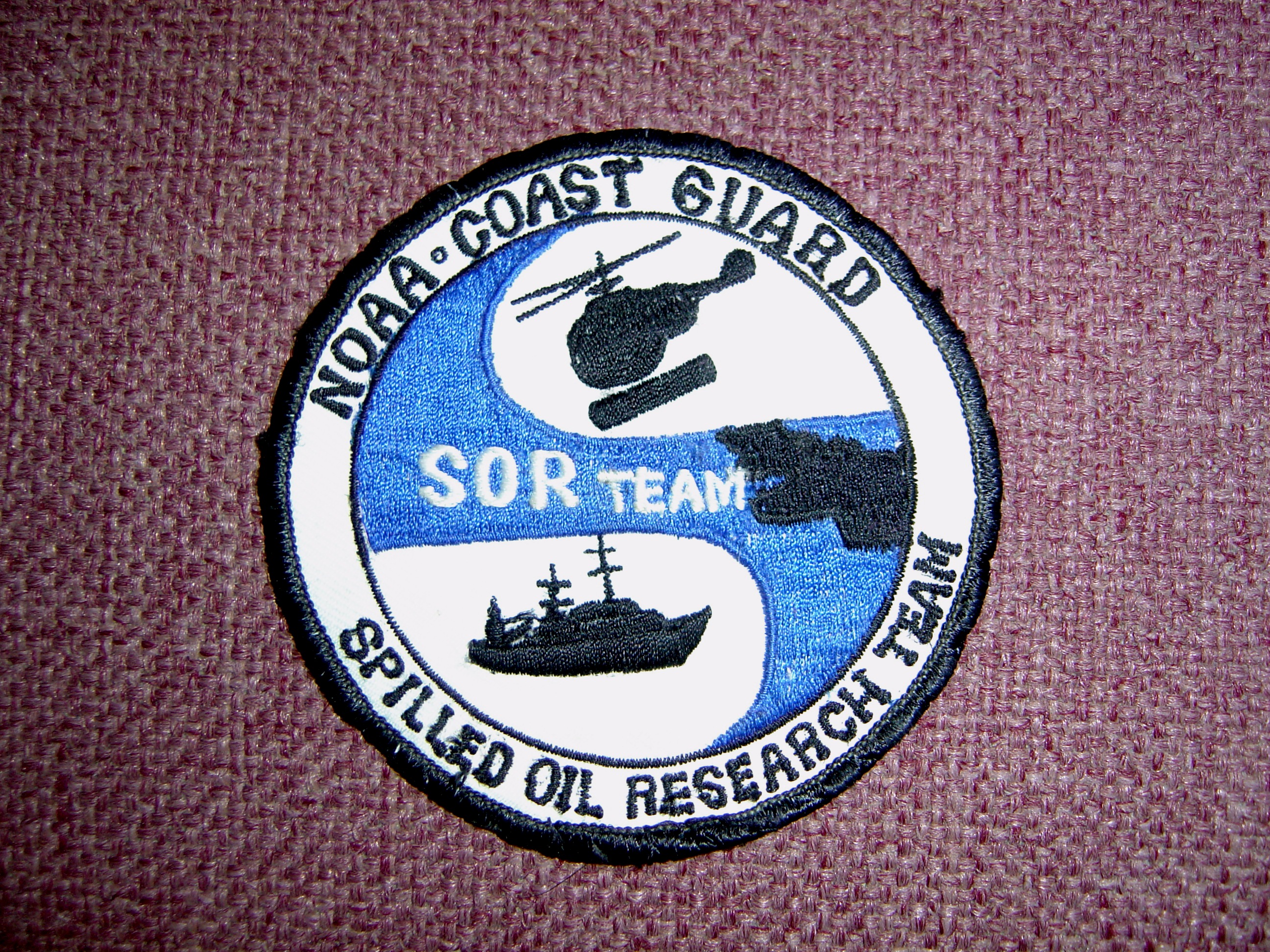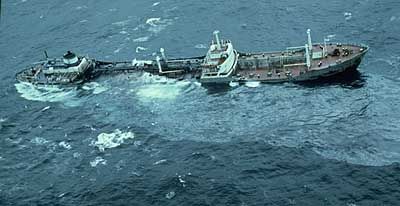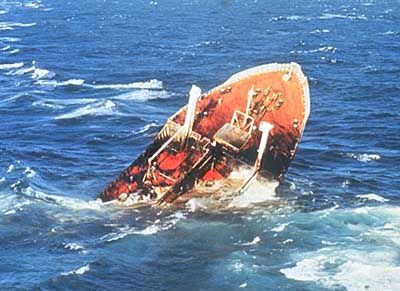From Research to Response, the Evolving Role of Science in Oil Spills
This blog post was written by Doug Helton, Regional Operations Supervisor for the West Coast, Alaska, Hawaii, and Great Lakes. Doug also serves as the Incident Operations Coordinator for NOAA OR&R's Emergency Response Division.
December 15, 2011 -- It’s now been 35 years since NOAA began its first major coordinated response to an oil spill, jumping to the aid of the wrecked tanker Argo Merchant near Nantucket Island, Mass., and launching what would eventually become the NOAA emergency response team I’m now part of.
Before this, NOAA scientists had been working on oil pollution issues for many years, but the focus was on research rather than emergency support during spills. That focus changed, however, when the storm-struck Argo Merchant ran aground on the Nantucket Shoals December 15, 1976, and six days later broke in half, spilling its entire cargo of 7.7 million gallons of oil near the famous Massachusetts fisheries.
The Spilled Oil Research Team
Earlier that year, NOAA had established the Spilled Oil Research (SOR) Team to study the effects of oil and gas exploration in Alaska. This team was a network of coastal geologists, marine biologists, chemists, and oceanographers that could go on-scene at "spills of opportunity" with the goal of investigating oil spill impacts.
The Argo Merchant spill was the first major deployment of the SOR Team. The U.S Coast Guard, charged with directing the spill response and cleanup effort, was inundated with competing and often conflicting scientific recommendations. To sort this out, the Coast Guard asked the SOR Team to act as its scientific adviser and be an informal liaison with the scientific community concerned with the spill.
This informal relationship quickly became invaluable. The Coast Guard began to rely on the SOR Team to coordinate the complex scientific issues that arose at spills after the Argo Merchant, including: the Metula, a crude ship grounding off of Tierra del Fuego, Chile; the Amoco Cadiz, a 1.6 million barrel oil spill off the Breton coast of France; and the IXTOC I well blowout in the Gulf of Mexico in June 1979.
Evolution of the Emergency Response Division
The Spilled Oil Research Team — now the Office of Response and Restoration’s Emergency Response Division — has grown from a handful of oceanographers, mathematicians, and computer modelers into a highly diverse team of chemists, biologists, geologists, information management specialists, and technical and administrative support staff. The informal role of scientific support coordinators is now formally recognized in the National Oil and Hazardous Substances Pollution Contingency Plan.
It’s been a busy 35 years (on top of events like the Deepwater Horizon/BP spill), and some of that old history has been forgotten. A couple years ago when I was cleaning out an equipment store room, I discovered this artifact of the earlier days on some old coveralls:

You can find out more about the evolving history of NOAA’s involvement in oil spill response and OR&R’s Emergency Response Division.
 An official website of the United States government.
An official website of the United States government. 

